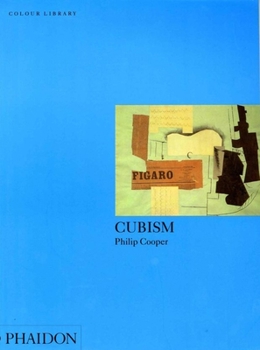Cubism: Colour Library (Phaidon Colour Library)
Select Format
Select Condition 
Book Overview
Cubism was one of the most influential movement in Western art this century. Beginning with the revolutionary experiments of Picasso and Braque in Paris between 1906 and 1908, cubism gathered momentum and soon spread to the rest of Europe and America. The movement's rejection of illusionistic representation in favour of an autonomous pictorial language opened the way to abstraction. The Cubists also invented papier collé and collage and pioneered a new approach to sculpture, innovations that are still being explored today. This book presents a wide cross-section of all these developments, and its 48 full-page colour plates, commentaries and black-and-white illustrations of comparative works provide a perfect introduction to Cubism.
Format:Paperback
Language:English
ISBN:0714832502
ISBN13:9780714832500
Release Date:September 1995
Publisher:Phaidon Press
Length:128 Pages
Weight:1.10 lbs.
Dimensions:0.4" x 8.9" x 12.0"
Age Range:13 years and up
Grade Range:Grade 8 to Postsecondary
Customer Reviews
1 rating
A Useful History and Summary of Cubism
Published by Thriftbooks.com User , 26 years ago
Cubism was a phase in the development of perhaps every major artist contemporary to the periods immediately preceding and immediately following World War I. Picasso and Braque, working closely together in Paris between 1906 and 1908, are credited as the creators of this style. Cubism was the major step toward Abstractionist painting that came to dominate twentieth-century art, preceded only by Cezanne, whom Picasso credited as its inspiration. Cooper credits the Cubists with the invention of collage, examples of which are included in this beautifully illustrated volume. With 48 full-page color reproductions of important Cubist paintings with accompanying discussion, and an additional 36 illustrations in black and white, this book offers a useful history and summary of Cubism and the artists who practiced it. A better-than-average addition to the library of new low-cost paperback art books that too frequently are plagued with an indifferent text.






